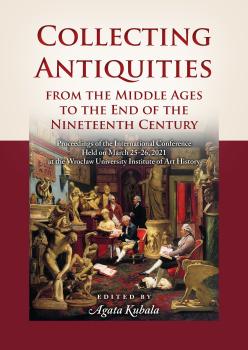From Greece to Wrocław: Eduard Schaubert’s Collection of Antiquities .......... 217
Synopsis
Among the collections of artefacts owned by German collectors and transferred to Polish museums after the Second World War, the set of objects created by Wrocław-based architect and antiquities collector Eduard Schaubert (1804– 1860) clearly stands out. The collection was created over the period of twenty years that he spent in Greece and was brought to Wrocław by Schaubert in 1850. After his death, in 1861, the objects, along with a collection of drawings and handwritten accounts documenting them, were partly sold and partly donated by his heirs to the Royal Museum of Art and Antiquity at the University of Wrocław (then the University of Breslau). The collection, which at the time it was handed over to the Wrocław museum numbered more than 300 objects, fits into the collecting culture of the era in which it was created, and Schaubert himself is a representative of the international community of philhellenic collectors dominating the landscape of European collecting in the first half of the 19th century. The vast majority of objects that were once in Schaubert’s collection have not survived to this day due to the Second World War and the post-war turmoil. These preserved are scattered in two museums today. The preliminary reading of the published inventory lists of the antiquities’ collection owned by Schaubert, prepared by August Rossbach who recorded the original state of the collected set, and a brief analysis of the preserved objects reveal the collection’s heterogeneity. Diversity was probably part of the original idea, from the moment Schaubert started his collection. It is also significant that the artefacts included in the collection were usually mass produced in series and either purchased or discovered privately, that is, acquired without precise archeological data. These are the main features that distinguish a typical philhellenic collection of antiquities, that is, a collection created from the philhellenes’ need to contact the ancient original as “touching the past” and to preserve the material remains of the glorified “cradle of art and knowledge” – ancient Greece.





